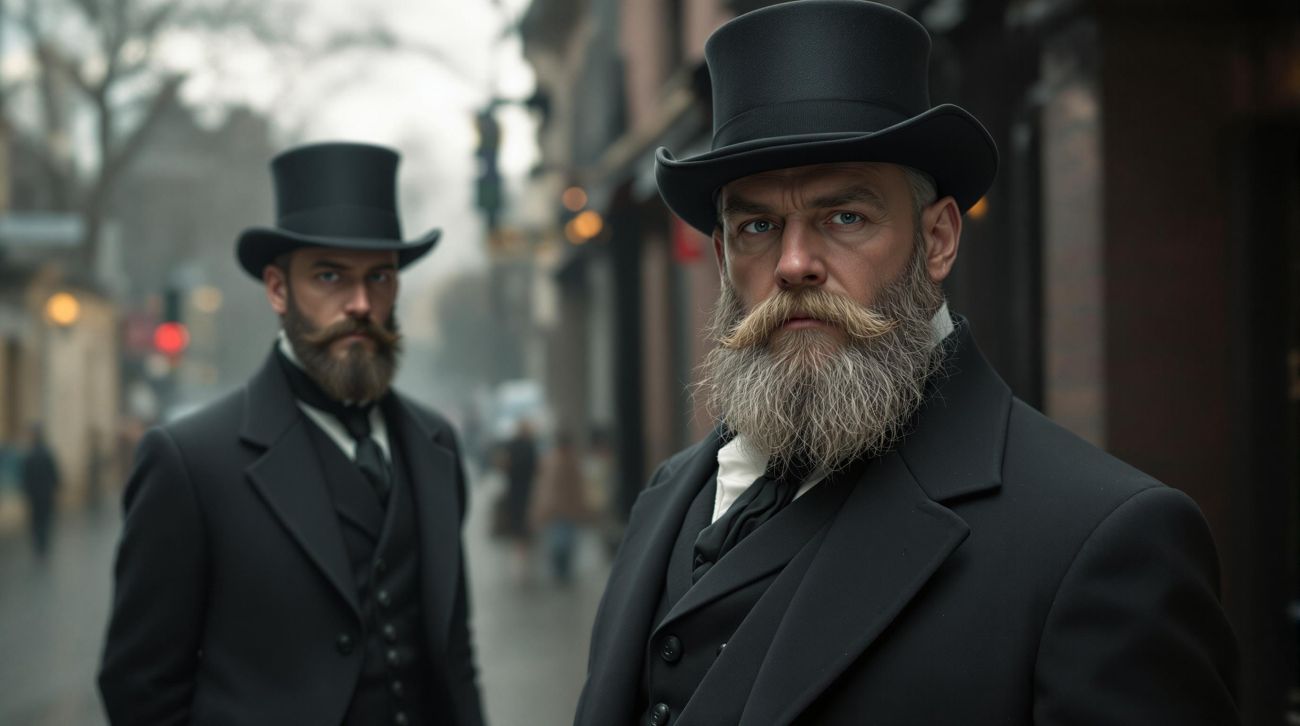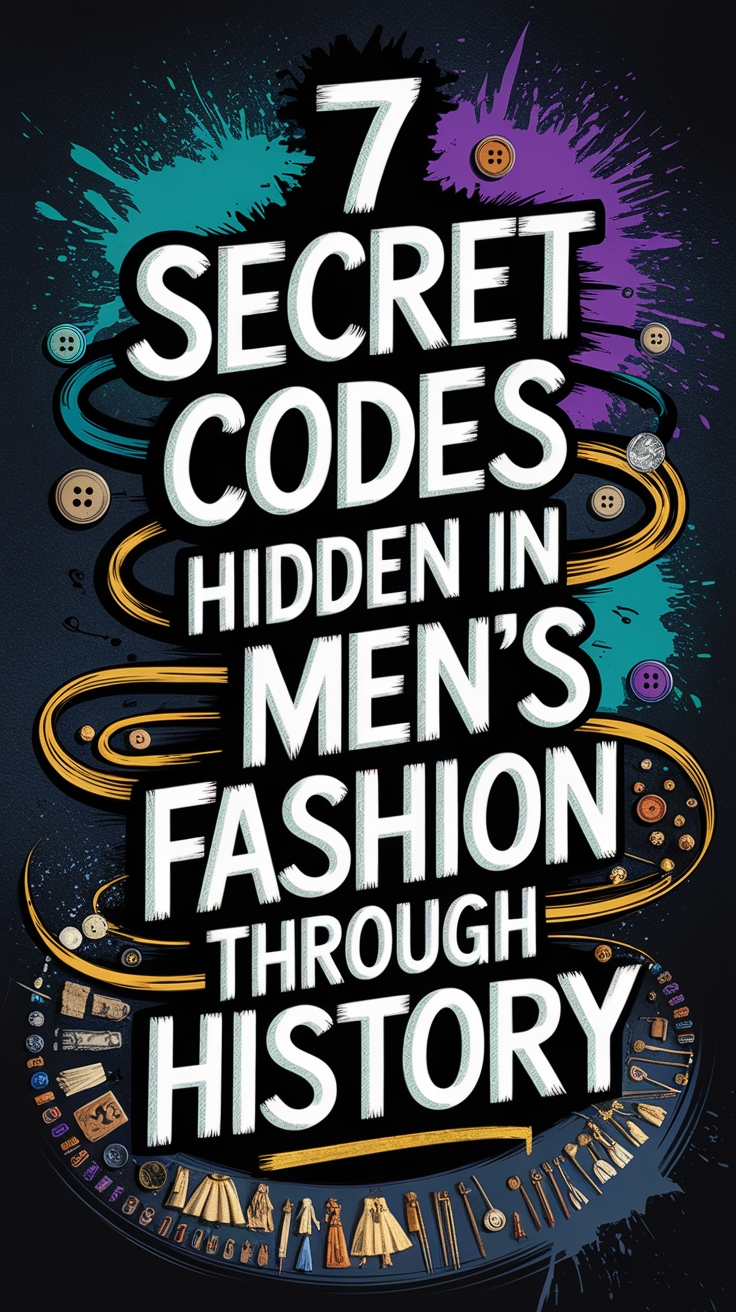Imagine walking down a busy street, where every outfit tells a secret story. Men’s fashion has always been a hidden language, more than just clothes. It reveals a world of hidden messages, where clothes speak volumes without words.
From Victorian times to punk rock, men have used clothes to show status, rebellion, and identity. Each detail, from stitches to accessories, sends a message. Fashion historians have found amazing ways men used their clothes to send secret messages.
Clothing has always been more than just for style or warmth. It’s a subtle way to show power, resist, and connect with others. Dressing became a way to share secret information, known only to a few.
Key Takeaways
- Clothing serves as a powerful non-verbal communication tool
- Fashion can convey complex social and political messages
- Secret codes in menswear have existed across different historical periods
- Clothing choices reflect cultural and personal identity
- Fashion is a sophisticated form of silent communication
The Mystery of Victorian Mourning Attire
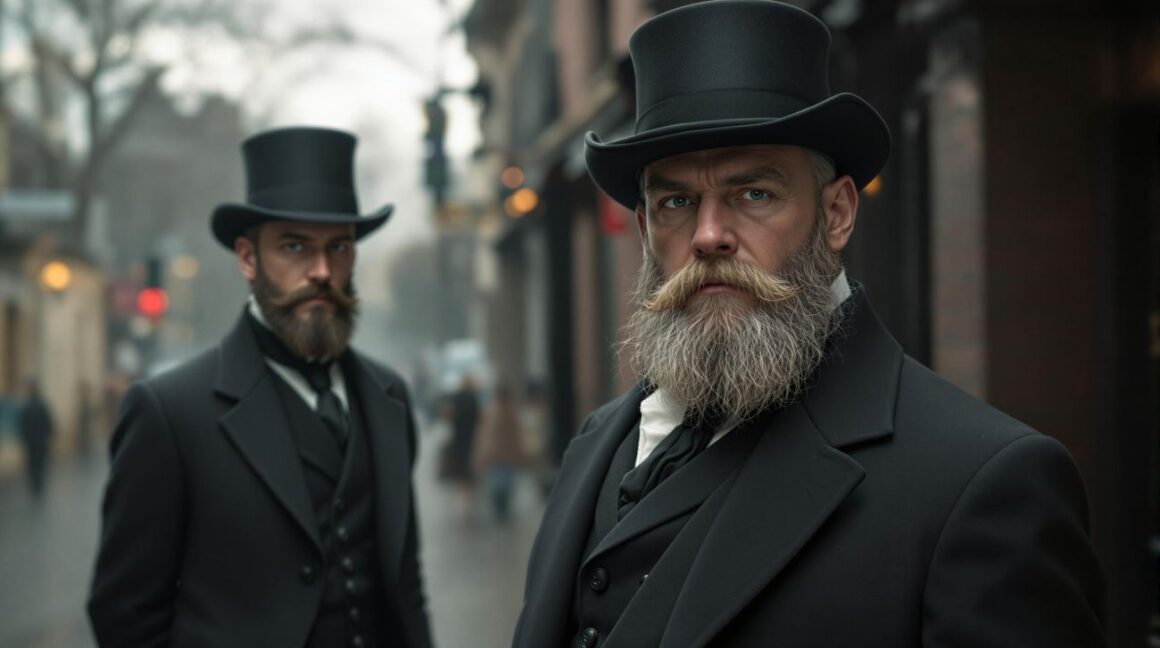
In the world of cryptic fashion, Victorian mourning attire is a standout. Queen Victoria’s long mourning after Prince Albert’s death in 1861 changed how people showed grief through fashion.
Men’s mourning clothes were a way to express emotions. Different mourning periods were shown through specific clothes. A widower might wear deep black then softer colors as he moved through his grief.
Small accessories were key in this silent talk. Mourning rings, black cravat pins, and certain fabrics told a lot about the wearer’s bond to the deceased. These signs let Victorian men show respect without words.
There were also regional differences in mourning clothes. Philadelphia had strict rules, while New York and Boston allowed more personal expressions. These differences showed how complex and nuanced mourning attire was.
Mourning wasn’t just about clothes; it was a social ritual. It told deep stories through fabric, color, and accessories.
Hidden Messages in 1920s’ Men Suits
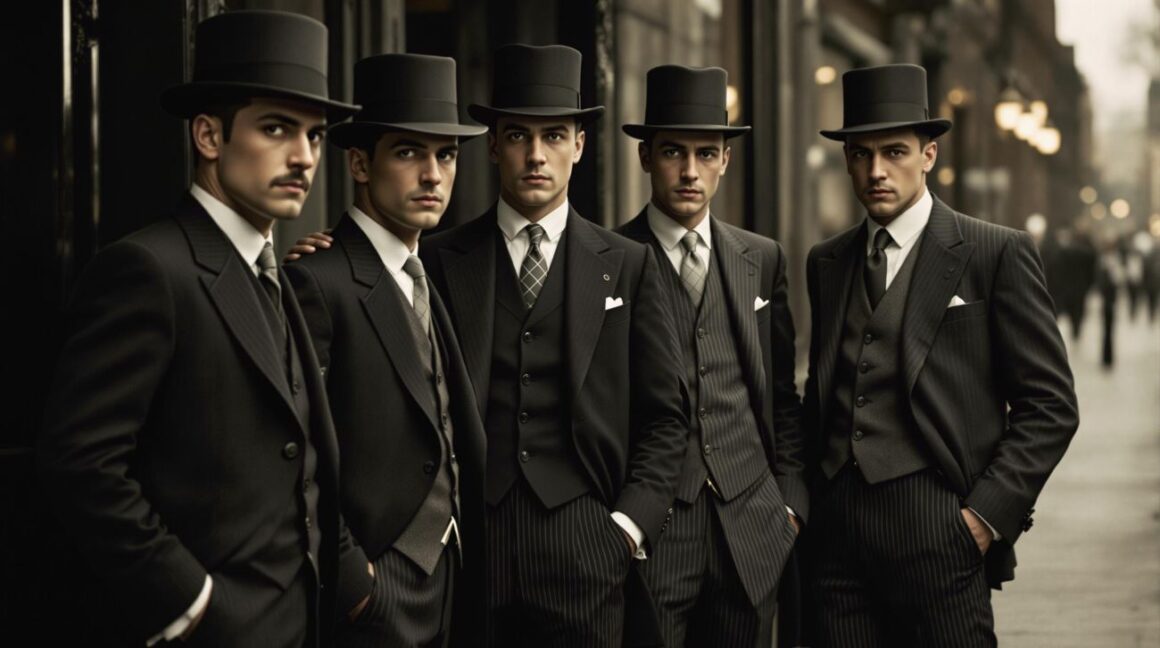
The Roaring Twenties changed men’s fashion into a secret language. Suits were not just clothes; they were tools for sending messages. These messages told about a man’s status, who he knew, and his secret connections.
Discreet codes were hidden in suit details. The size of lapels, the fit of a jacket, and pocket square placement could share secrets. Men used these signs to show they belonged to certain groups or had ties to secret networks.
Speakeasies loved these hidden fashion messages. A pocket square at an angle or a certain fabric could mean you knew about secret bars. Tailors played a big role, making suits that said more than just what they looked like.
The suit’s change showed big social shifts. Men in the Jazz Age used clothes to rebel against old rules. They created new social orders with their outfits. Every thread and seam was a message, making men’s fashion a complex way to communicate.
Learning about these hidden messages shows how complex 1920s city life was. Fashion was more than looks; it was a way to move through society’s layers.
The Secret Significance of Zoot Suits
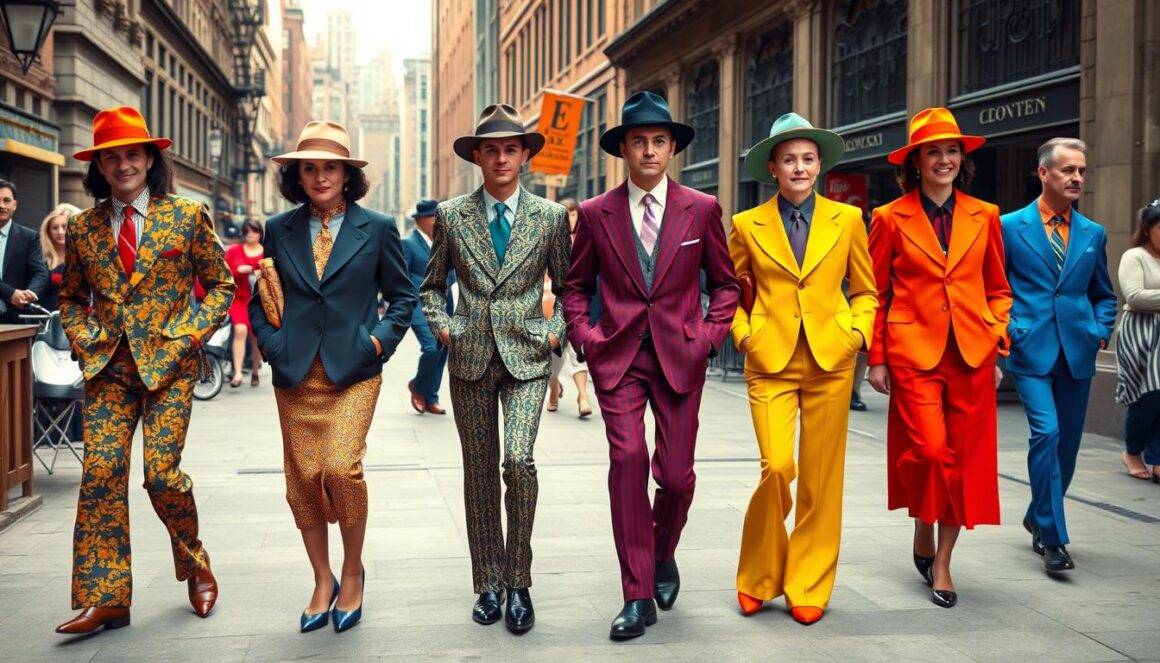
In the 1940s, the zoot suit became a symbol of rebellion. It had oversized shoulders and big pants. This style was a secret way for marginalized groups to challenge the status quo.
Mexican American and African American youth saw the zoot suit as a way to stand up. It was a bold statement against the narrow clothes forced by wartime rationing. Each suit was a declaration of who they were and their pride.
The Los Angeles Zoot Suit Riots of 1943 showed the suit’s importance. Over 300 young men were attacked by white servicemen. This showed how clothes could challenge social norms.
Malcolm X called the zoot suit a “killer-diller coat.” He saw it as more than just clothes. It was a way to reject mainstream values and show cultural pride.
The zoot suit’s impact is lasting. It shows how clothes can express culture and empower individuals. It’s a powerful symbol of resistance.
Subtle Indicators in 1960s’ Mod Fashion
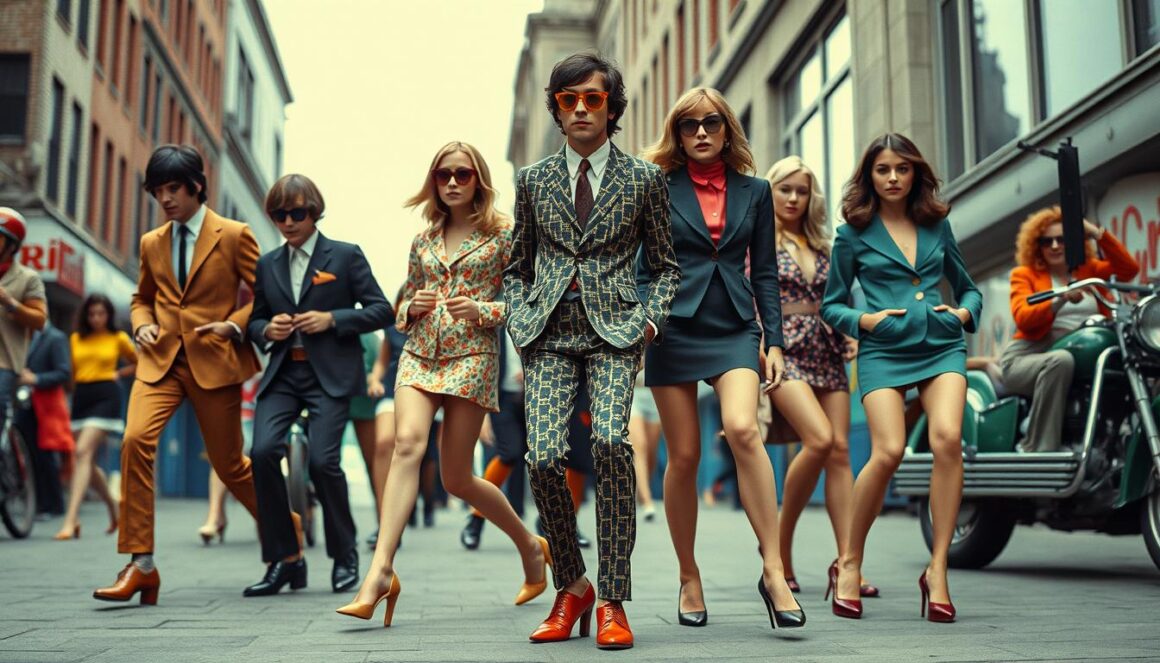
The 1960s Mod subculture turned fashion into a secret language. British youth used clothes to show their group and status. They wore sharp suits, narrow pants, and unique shoes to signal their allegiance.
Mod fashion was like a code where clothes told stories. A well-pressed blazer and pointed boots showed who was truly part of the scene. The outfit’s details spoke volumes about a person’s dedication.
Mod styles spread worldwide, each with its own twist. London favored sleek looks, while Europe added bold colors and shapes. These small changes were key to the movement’s identity.
A tailored suit in the 1960s cost about $75, or $600 today. This showed how much people valued their style. It was a serious way to express oneself and belong to a group.
Mod fashion was more than clothes. It was a way to show who you were and where you belonged. Every piece of clothing was a message of individuality and group pride.
Punk Fashion’s Underlying Rebellion
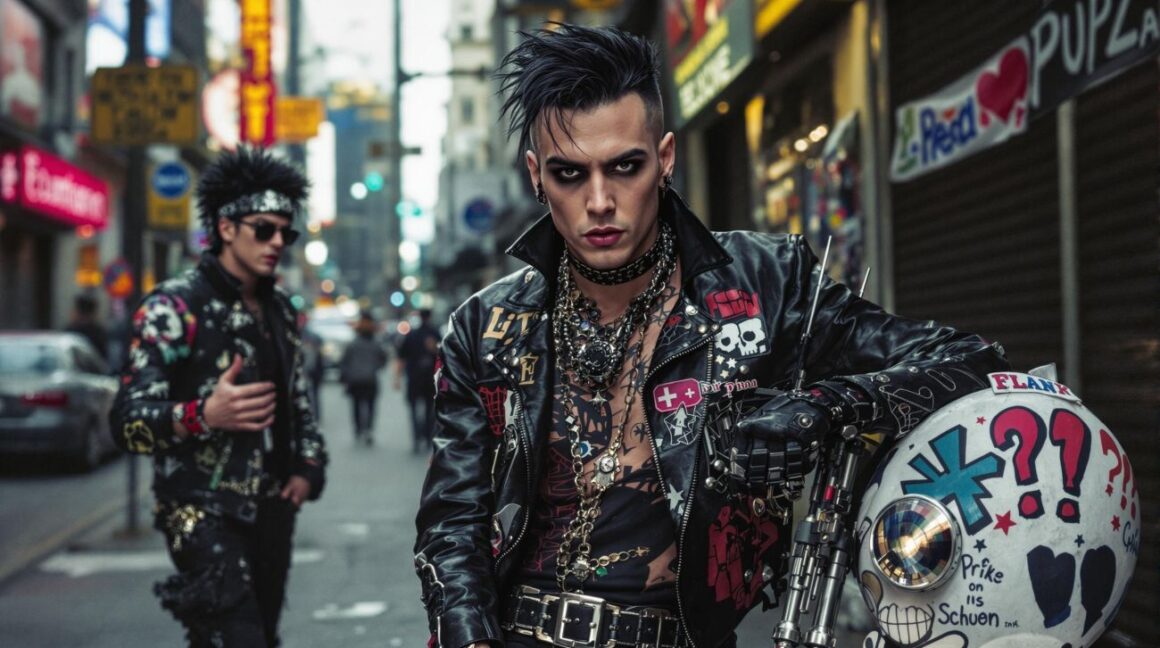
Punk fashion burst onto the scene in the late 1970s. It started in New York and London. This movement turned clothes into a way to express rebellion.
Safety pins, leather jackets, and ripped clothes were key. They were more than just fashion. They were signs of opposition to the mainstream.
The punk movement was a cry from the working class. It was a challenge to the status quo. Young people from lower backgrounds used their clothes to speak out against society.
Leather jackets with patches and DIY touches were symbols of resistance. They showed individuality and a desire to break free.
Different punk scenes had their own styles. New York punks were different from London punks. Each had its own way of expressing rebellion through clothes.
The hardcore punk scene took it a step further. It focused on raw, unfiltered expression. Clothes and attitude were key.
Punk’s DIY spirit was a big deal. It was a rejection of commercial music and fashion. Punks made their own clothes and music, showing their defiance.
The movement grew worldwide. Scenes popped up in cities like Melbourne, Toronto, and San Francisco. It became a global language of resistance, using fashion to communicate.
Power Ties: More Than Just Accessory
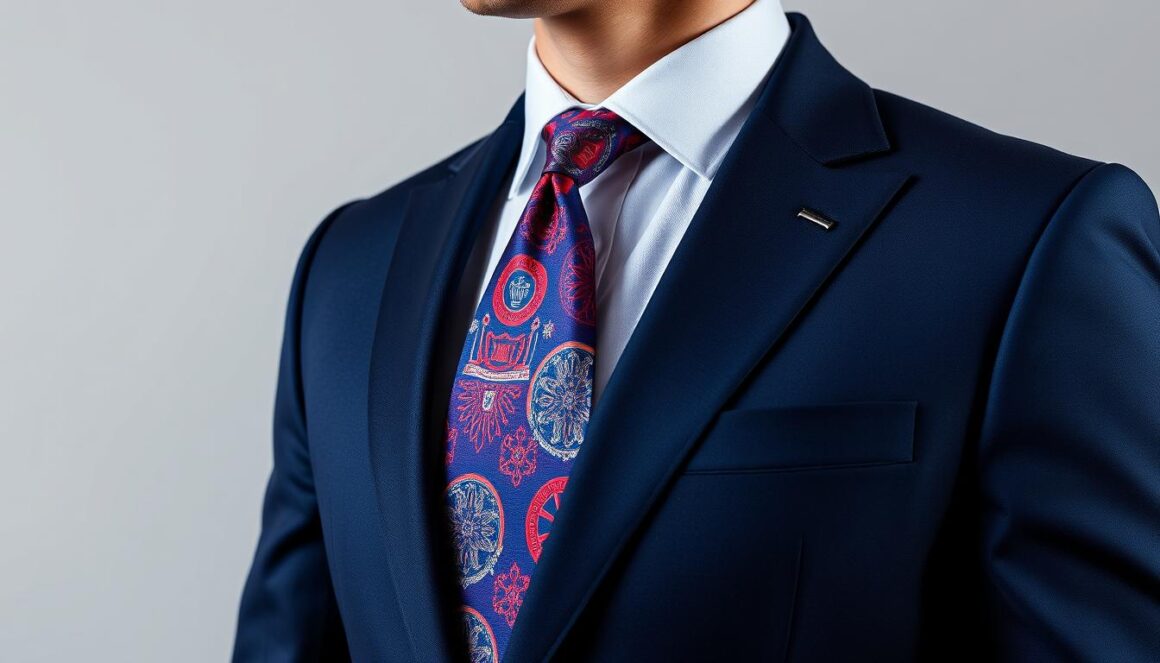
Power ties are more than just a piece of clothing. They send important messages about a man’s career and goals. Studies show that clothes can change how others see us in just 7 seconds. So, every detail in our outfit matters.
The power tie became key in the 1980s corporate world. Its color, pattern, and how it’s tied send messages. A bold red tie shows confidence, while a navy blue one means you’re reliable and professional.
Different jobs have their own tie styles. For example, Wall Street likes simple silk patterns, while creative fields go for bolder designs. Wearing the right tie can even help you get promoted by up to 30%.
Today, ties are seen as a way to show who you are. They go beyond just looking good. The right tie tells a story of your ambition, understanding of culture, and skills.
To use ties effectively, you need to pay attention and choose wisely. A well-chosen tie shows your style, ability, and class. It’s like having a silent but powerful message in your outfit.
The Cryptic Language of Sneaker Culture
Sneaker culture has grown from a small interest to a worldwide phenomenon. It uses veiled attire meanings that say a lot without words. Boston’s Bodega, started 15 years ago, played a key role in understanding these hidden messages in streetwear.
Brands like Stone Island and Acronym made sneakers more than just shoes. They stood for social status, realness, and cultural knowledge. By 2006, sneaker culture started to mix with mainstream fashion. Fans used special releases and collaborations to silently share who they were.
Choosing the right sneakers is an art. It’s about knowing rare editions, limited releases, and collaborations. A pair of shoes can show you belong to special groups, revealing complex social networks through everyday shoes.
Streetwear experts see each sneaker as a story. From old Nike collaborations to new designs, these shoes are more than fashion. They tell stories of personal style, cultural ties, and secret social bonds.
Sneakerheads have created a secret language where every detail in a shoe has meaning. These hidden signs turn shoes into powerful statements of who we are and our groups.
Conclusion: 7 Secret Codes Hidden in Men’s Fashion Through History
Fashion is more than just clothes. It’s a secret language that speaks volumes. Men have used their outfits to show who they are, challenge rules, and share hidden messages.
The global menswear market is huge, worth $500 billion in 2020. These secret codes are not just about looks. They are powerful ways for people to express themselves and stand out in society.
Today, fashion is changing with digital tech and global connections. Men’s fashion keeps using old secrets in new ways. It mixes old symbols with modern designs, making it even more interesting.
Learning about these secret codes shows us how clothes are more than just things we wear. They are a way to share stories and connect with others. Every piece of clothing has a message, waiting to be understood.

